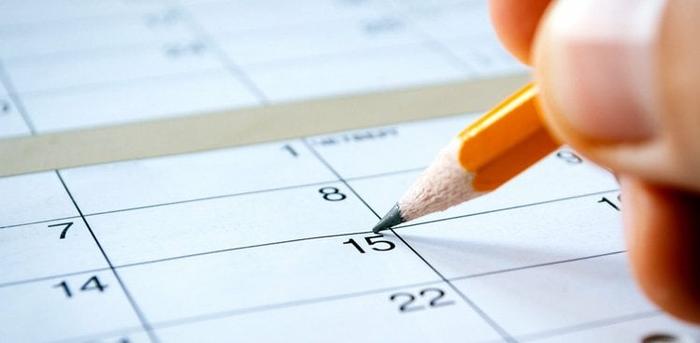
How many times every week do you hear co-workers, friends, and family members complain that they wish there were more hours in the day? The thought of knocking off everything on your to-do list and heading out the door before dark every evening is pretty much a myth.
Well, not for Cal Newport.
Newport is a Georgetown professor as well as a father, a four-time author, a frequent publisher in his field of study, and a constant blogger. Oh, and he still stops work every day at 5:30 PM and doesn’t work most weekends. He sounds like a superhero, right?
Turns out, almost anyone can be just as productive as he is by learning from his methods. One of Newport’s top time-savers is what he calls a “fixed productivity schedule:” He plans his day backward, starting at 5:30 and working his way to the earlier hours. The main idea is that he gives himself a set amount of time to work, strictly schedules his day accordingly, and forces himself to focus.
How can you make a backward schedule work for you? Here’s how to plan it out—and make sure you’re filling it with the right stuff.
1. Skip the To-Do List and Schedule Everything
The important tenant of the backward schedule method of productivity is forgoing the to-do list altogether and instead scheduling everything into your day. Why? By actually putting agenda items on your calendar, you’re more realistic about how long they’ll take and when they’ll get done. You’ll also know exactly what time you need to start your day in order to fit everything in.
So, try pulling out your old to-do list, opening your calendar, and actually creating an event for each item. For longer-term tasks, think about how much time you need each day to methodically work your way through it. Then, as new tasks come up, find time for them on your calendar, rather than relegating them to your never-ending to-do list.
2. Start With the Big, Then Slot in the Small
It seems super obvious, but how often do you spend your actual workday answering emails, networking, and generally not paying attention to the deeper parts of your job?
When you’re planning out your schedule, start by blocking out big chunks of time for the things that are really important, and then using the remaining breaks for smaller tasks. Personally, I’ve stopped answering non-work emails (non-urgent press inquiries, emails from old connections, and the like) between nine in the morning and five at night, and it’s forced me to focus on the bigger agenda items instead of getting lost in a sea of smaller tasks. Emails can be answered whenever; coming up with a winning content strategy can’t be put off for after-work hours.
3. Get Rid of Your Morning Gossip Session (and Other Time-Wasters)
Newport says he accomplishes this fixed productivity schedule every day by “ruthlessly culling obligations, turning people down, becoming hard to reach, and shedding marginally useful tasks along the way.”
Sounds aggressive, but if you think about it, there are probably plenty of ways in which you’re not using your time as well as you could be. For example, instead of gossiping next to the coffee pot in the morning or near the copier in the late afternoon (losing who knows how much time), save your socializing for more appropriate times of day, like the 30-minute lunch break you’ve put on your schedule.
Planning your day from finish to start can be incredibly intimidating, but knowing that you’re taking out unnecessary action items and being realistic about how much time everything will take makes the process a lot easier—and help you leave the office exactly when you want to.